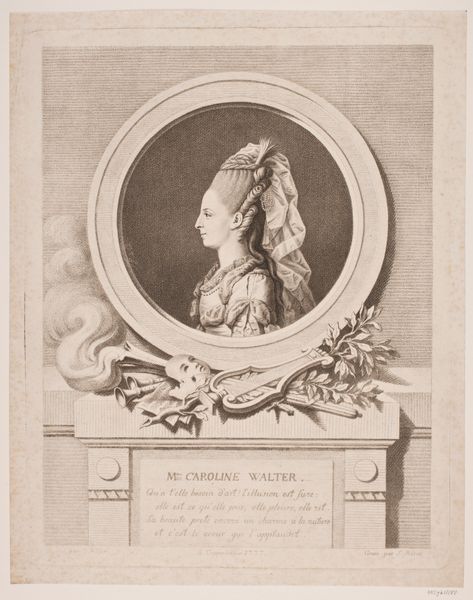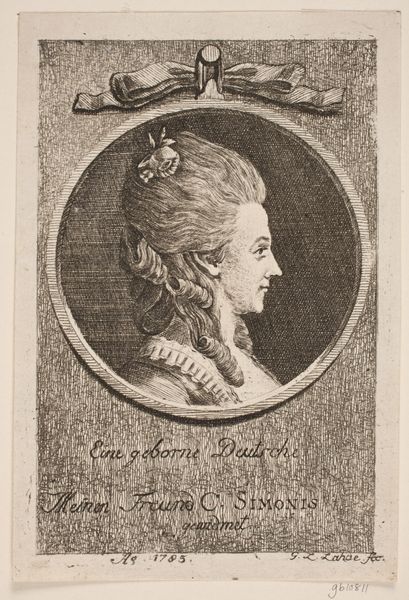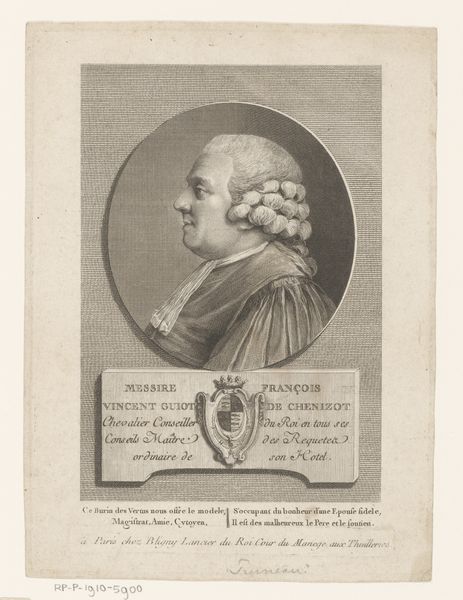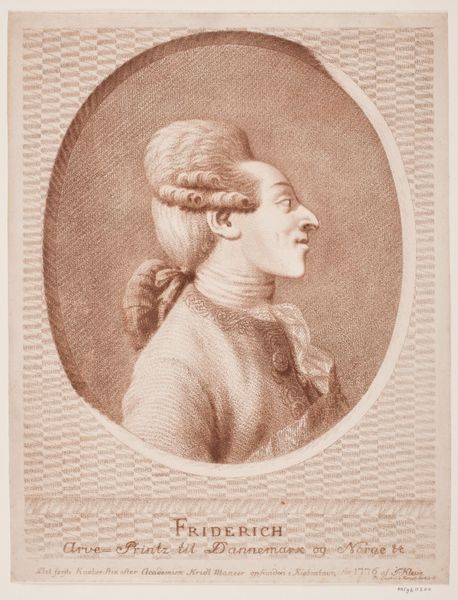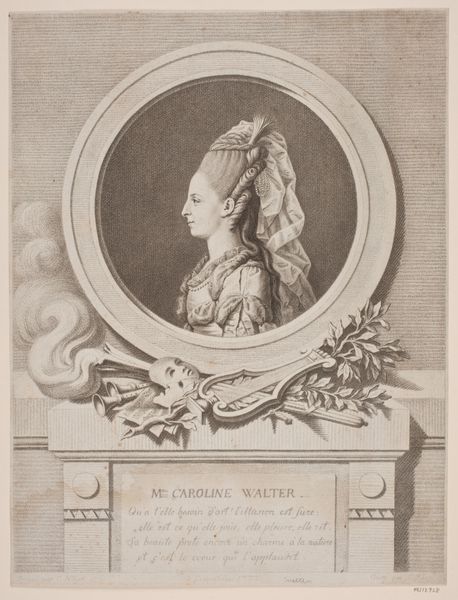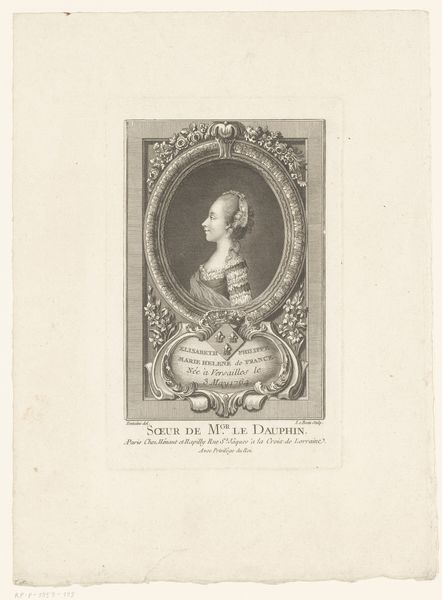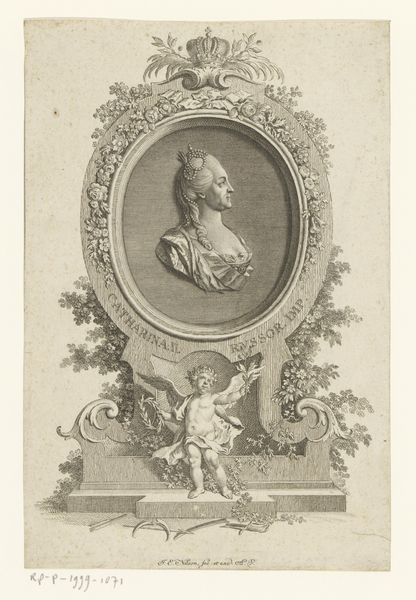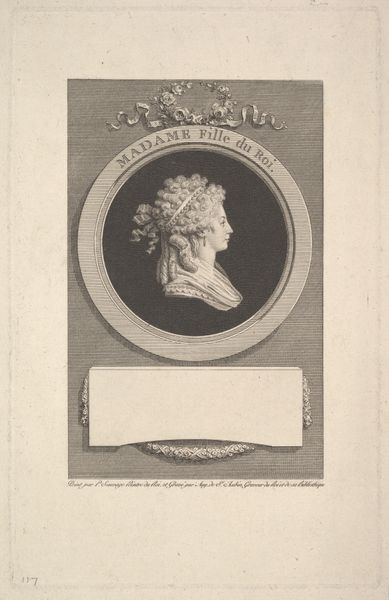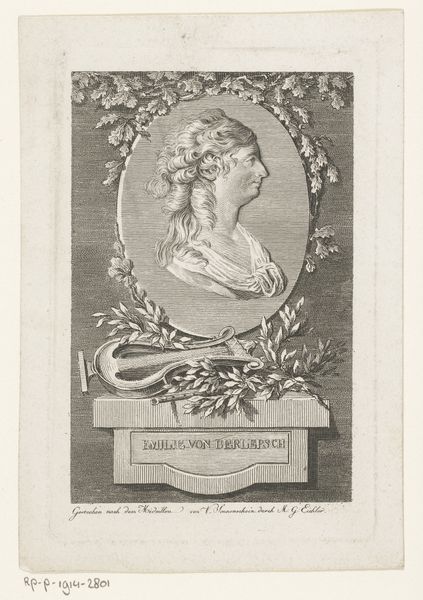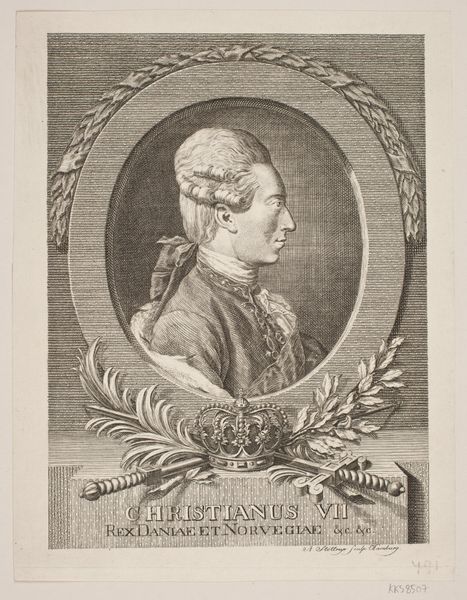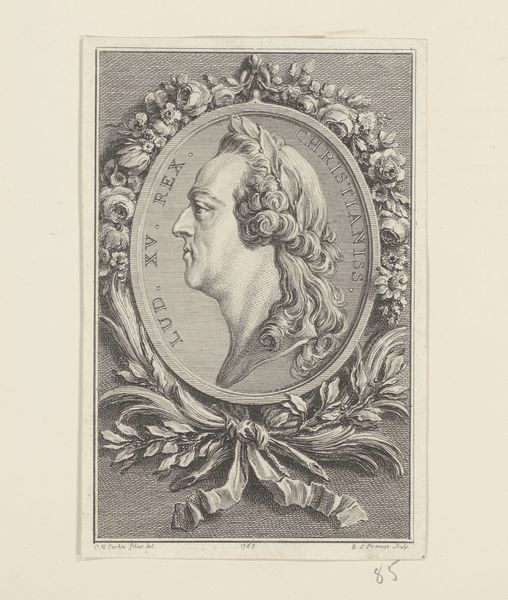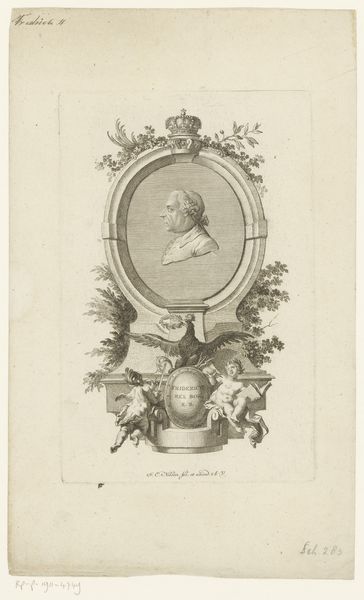
print, engraving
#
pencil drawn
#
neoclacissism
# print
#
pencil drawing
#
engraving
Dimensions: 188 mm (height) x 113 mm (width) (bladmaal)
Editor: This is “Madame B. C. Boye,” an engraving by Terkel Kleve, likely dating from the late 18th century. It presents the sitter in profile, framed within a classical oval. It gives the impression of refined elegance, almost like a cameo. What can you tell me about this artwork from a historical point of view? Curator: It’s a fascinating piece for understanding the socio-political role of portraiture in the late 1700s. The neoclassical style, evident in the clean lines and the idealized profile, speaks volumes. Portraits were tools for projecting status and respectability within specific social circles. Notice how the engraving mimics the look of a classical relief. Editor: It definitely has that feel of ancient Greek or Roman sculpture! Curator: Exactly. Kleve is not just portraying Madame Boye; he's aligning her with the virtues and authority associated with antiquity, something highly valued by the elites during that period. This portrait performs a very public function; what aspects do you see reinforcing this interpretation? Editor: The lettering beneath her profile that spells her full name. Almost as if a marker of legitimacy. What does the frame itself suggest? The decorations atop of and below it look very performative. Curator: Absolutely. The carefully lettered inscription grounds her identity and public existence. As you noticed, the ribbon and architectural embellishments, also pulled from classical sources, further amplify this association. This tells us about how portraiture reinforced hierarchies, making visible the roles and positions people like Madame Boye occupied. Now that we recognize some key elements of what’s being presented to us, is this truly about the individual in question, or the statement she is meant to embody? Editor: That’s a fascinating point! So it’s less about her personality and more about representing her place within the social structure of the time? Thinking about this from the subject’s perspective is mind-bending. Curator: Precisely. By analyzing the style and presentation, we uncover the values and power dynamics at play in 18th-century Danish society. This approach goes beyond merely identifying the sitter.
Comments
No comments
Be the first to comment and join the conversation on the ultimate creative platform.
